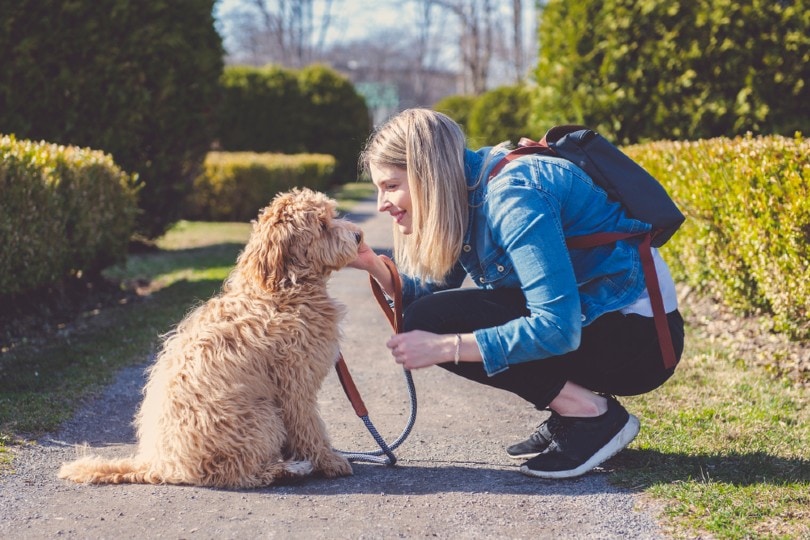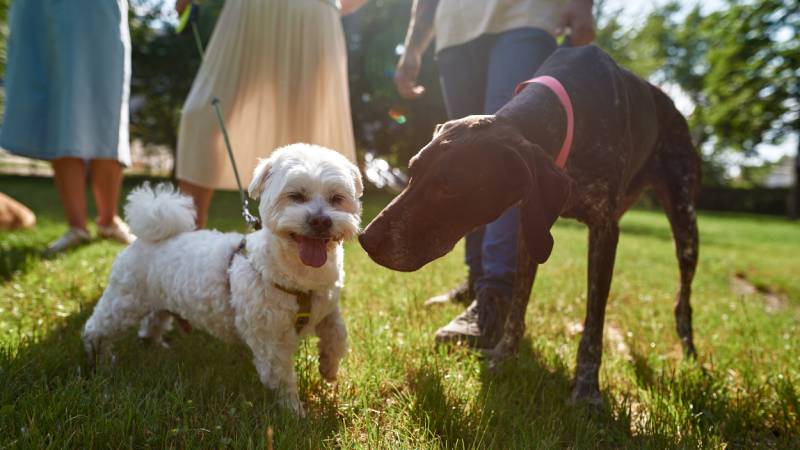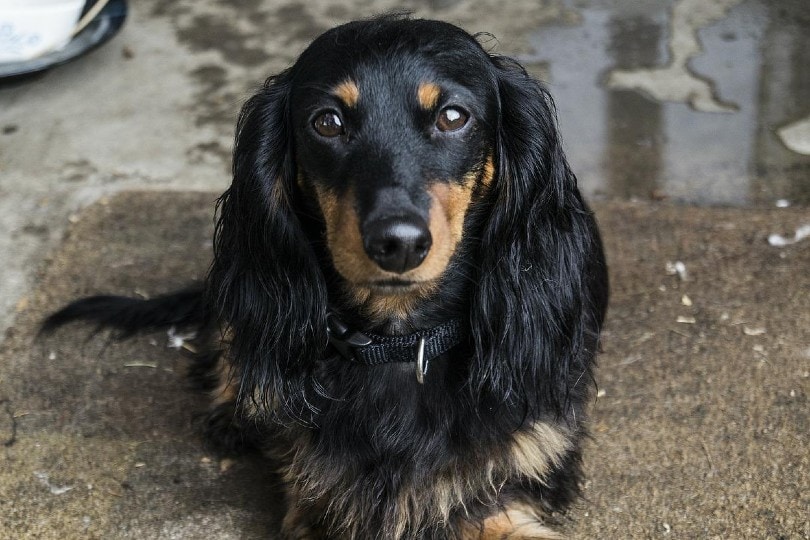There are many moments when you and your canine companion will catch each other’s gaze and have a connection. Much like humans, dogs love to receive and show their affection—whether it’s an excited greeting when returning home, playing ball, dishing out treats, or simply a loving gaze accompanied by a belly rub. Generally, dogs will enjoy eye contact with their owners and they will do it to seek attention and express affection, but eye contact with strangers can be perceived as a threat.
Body language is a critical means of communication for dogs, and eye contact is one of the primary methods. It helps canines communicate, express emotions and get your attention. Although the puppy-dog eyes may seem cute and friendly, they can sometimes be a sign of dominance, especially when a dog encounters an unfamiliar person or fellow canine for the first time.
It can be hard to determine the reason for your dog’s deep gaze or long stare at times, but we’ll examine what it could mean.

Why Is My Dog Staring at Me?
Eye contact from your pup is a distinct sign that it is trying to tell you something. Sometimes all that the dog wants is a bit of bonding and attention, and those puppy dog eyes are the animal’s way of letting you know that it needs some love.
Staring into your soul while you enjoy a snack could indicate the dog’s desire to eat or gazing at you while sitting at the front door could be a polite way to communicate that it needs to go outside.
The dog’s stare can also be manipulative, depending on how you have responded in the past and what boundaries you have set with your canine. Gawking at you by dinner table is a game of patience. The usual outcome is that the uncomfortable stare causes you to hand over food. Be sure not to reward your pooch for its manipulative stare, and try to set boundaries to keep your pet away from the dinner table.
Eye Contact With Humans
If a dog is not threatened by eye contact with a human, its gaze is usually paired with other gentle and excitable body gestures, such as tail wagging and even a gentle touch with a paw. Dogs are usually trying to gauge us, which involves staring to read us and sense our mood or intentions.
Dogs very quickly learn our gestures and cues that are associated with something fun or rewarding, like a walk to the park or dinner time.
Eye contact between you and your pup is also a way to bond and build trust. When you are locked into a gaze, oxytocin is released, which is the same love hormone that is released when meeting your newborn baby for the first time.

Eye Contact With Unfamiliar People
Dogs will usually react to unfamiliar people the same way they would respond to a first encounter with another dog. They may consider a strange human to be a potential threat, so it is vital to approach with caution if you are meeting a new dog for the first time.
Do not make direct eye contact with a strange canine but look in its direction. Be aware of your body language and how the dog has been responding to you. An aggressive response can include a locked-in gaze, growling, hair standing up, and a tense posture. A dog who has a dominant personality or is perhaps triggered by past trauma can also react aggressively.
Eye Contact Between Dogs
Dogs will usually make eye contact to decide if they want to interact, but the behavior typically lasts s only around 2 seconds. If the brief gaze becomes a stare, this is usually a sign of dominance.
When a dog initiates a stare, the other dog can either challenge it or choose submission. If the opposing dog meets the gaze, conflict is likely to occur.
Always walk your dog on a leash to keep it safe from other canines. You don’t know how other dogs will respond, and by having your dog on a leash, you can pull your dog away from a potential conflict.

Final Thoughts
Eye contact between you and your canine friend is an important and effective means of communication. It encourages bonding and is a love language between humans and pets. Although it can mean hostility among fellow canines, eye contact is usually a positive sign when dogs stare at their owners. Some dogs may need more training with their pet parents if they have been abused by prior owners. In that case, eye contact can be intimidating.
It is important to learn your dog’s body language to gauge how it will respond to a particular situation. It is also vital to train your canine at an early age. Play games, use treats when training, and try not to use your dog’s name in a negative way.
A dog’s love is unconditional, and like humans, they will naturally avoid conflict unless it feels threatened. So, look into your dog’s eyes and communicate your unconditional love and affection. Bonding with your canine companion is rewarding, and it’s one of the most intense feelings you will ever know.
Featured Image Credit: BruceEmmerling, Pixabay











